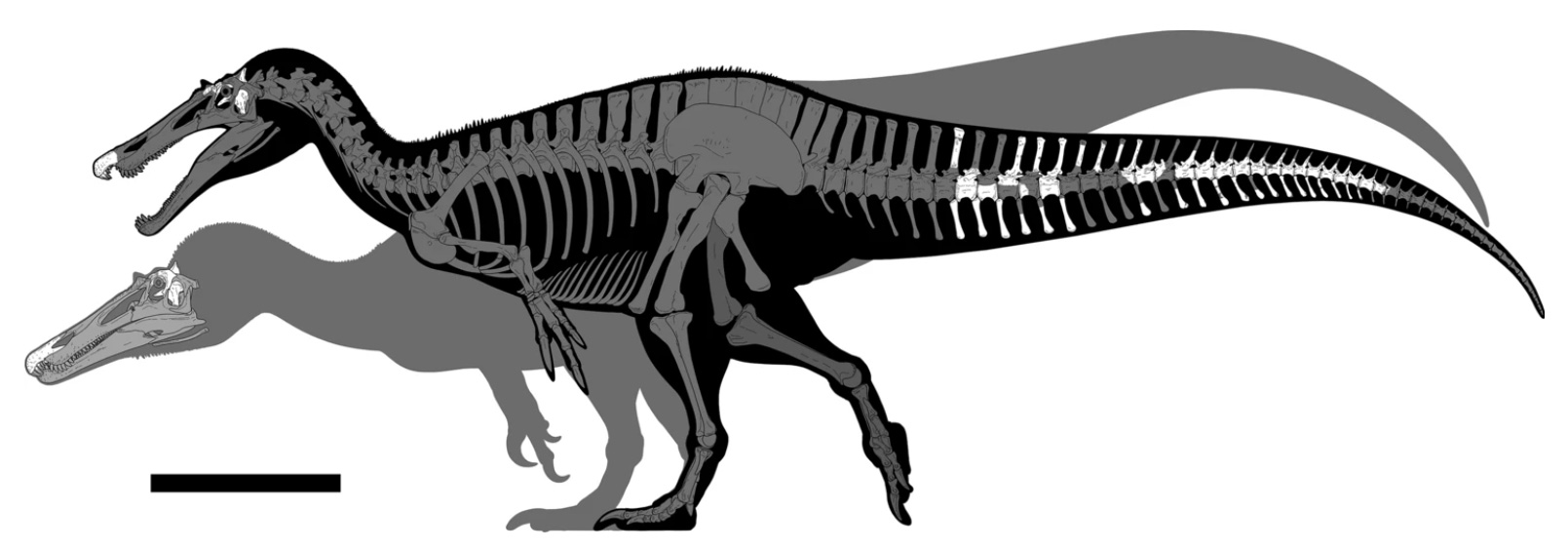Two new carnivorous dinosaurs discovered on the Isle of Wight
Two new species of carnivorous dinosaur have been described from fossils discovered on the Isle of Wight.
Both were species of spinosaur, a family of large, predatory dinosaurs with massive, crocodile-like jaws that were bipeds, yet had strong, well-developed 'arms'. They are suspected to have predominately fed on fish, but take other prey, too.
Fossil hunters found two different skulls in the south-west of the Isle of Wight in 2013, with bones gradually emerging from the rocks over the four-year period to 2017 as marine erosion took its toll.
Although quite similar to (and therefore initially suspected to be) Baryonyx, a 10-m spinosaur of which a complete skeleton was discovered in a clay pit in Surrey in 1986, scientists have now have the chance to study the remains in detail and found them to be sufficiently different to be confident that each represents a species new to science.

Artist's impression of the two new species of spinosaur, Ceratosuchops inferodios (rear) and Riparovenator milnerae (front), recovered at Chilton Chine, Isle of Wight. White bones represent recovered elements (Dan Folkes (CC-BY 4.0)).
The first of the two predators has been named Riparovenator milnerae ('riverbank hunter'), for which the species name honours prominent palaeontologist Dr Angela Milner, who described Baryonyx in 1986 and recently passed away. The second, Ceratosuchops inferodios ('crocodile-faced hell heron'), is also named because of its presumed aquatic lifestyle and distinct features on its skull, such as bony ridges around the eye.
The two species, both of which are similar in size to Baryonyx, are suspected to have lived around 130 million years ago, in the early Cretaceous period.
More on the findings can be read in the open-access paper, which is online here.

